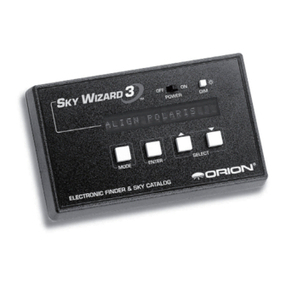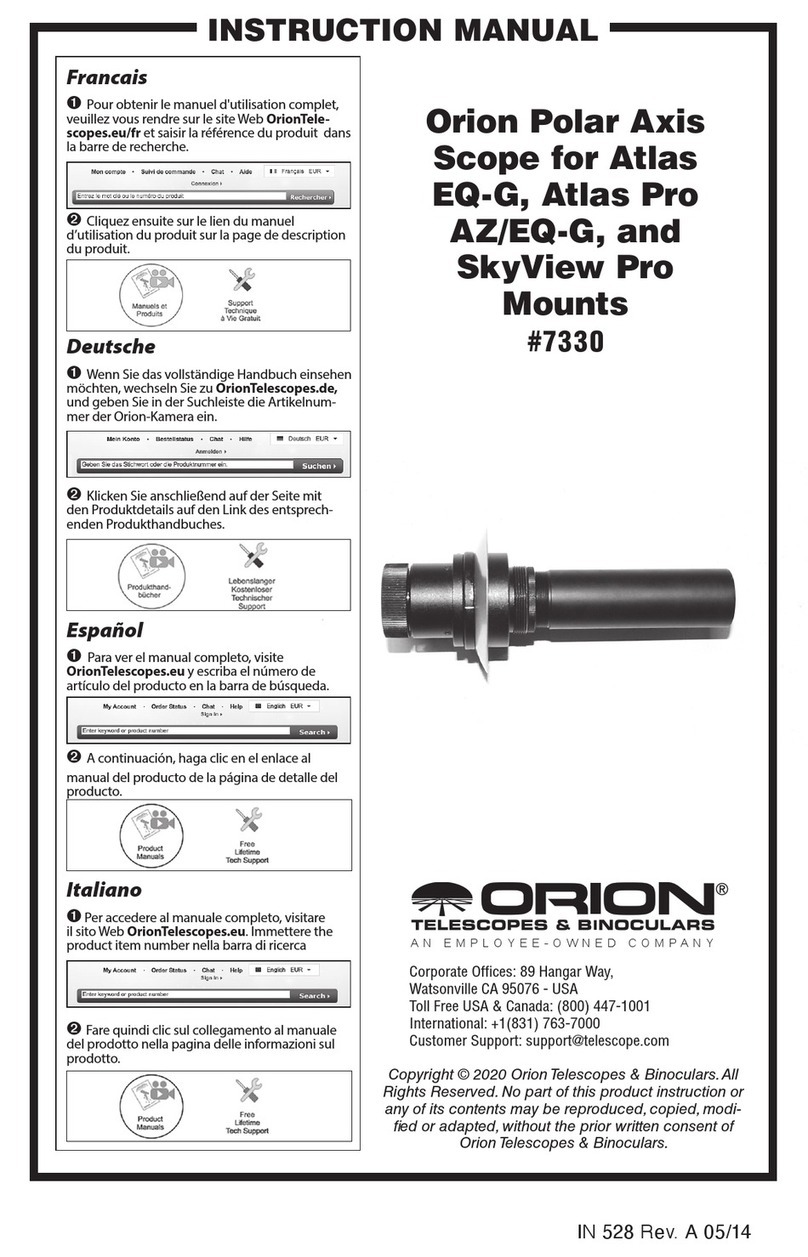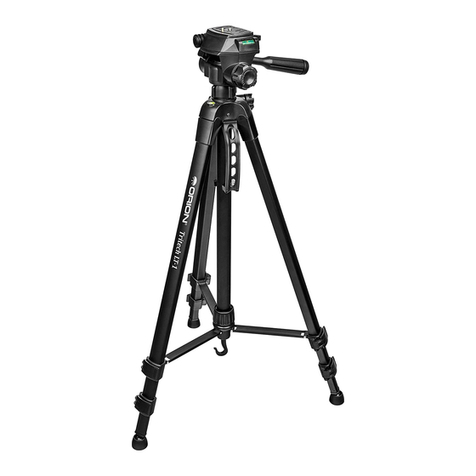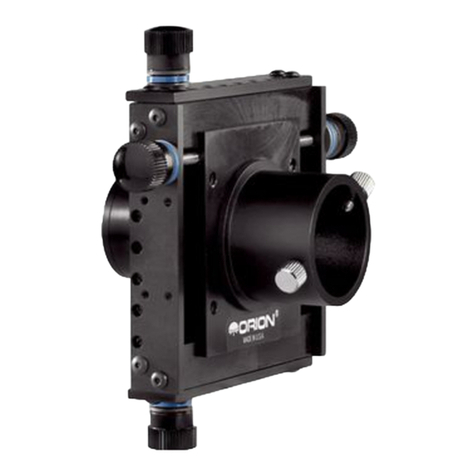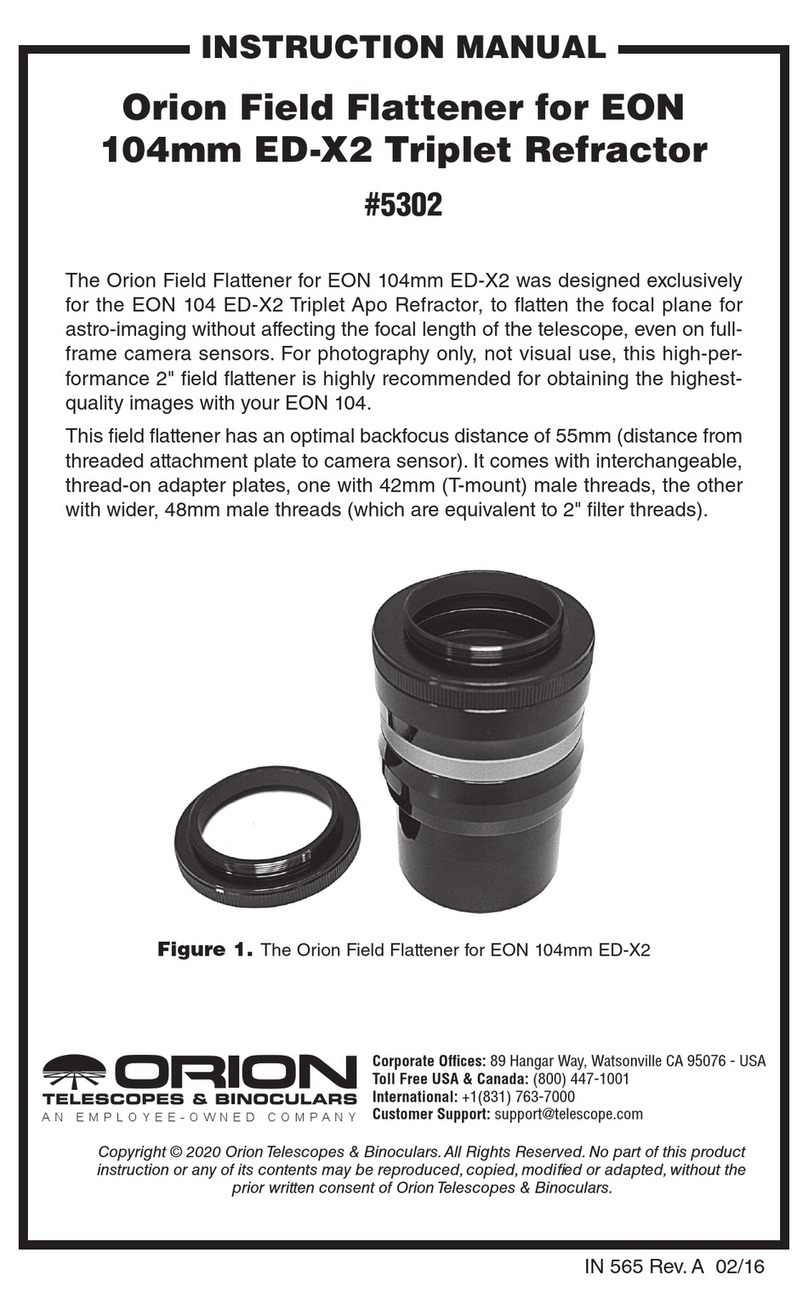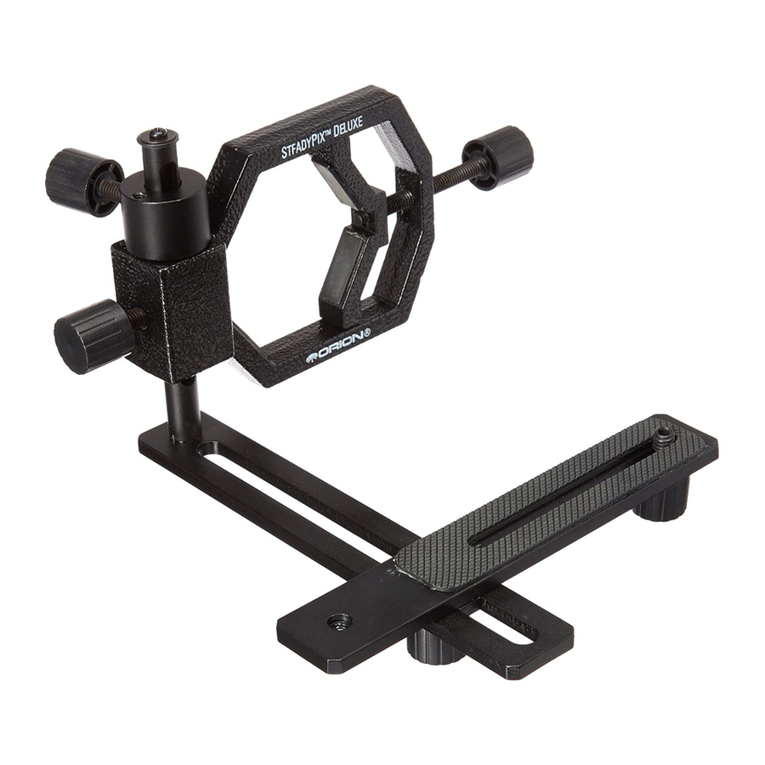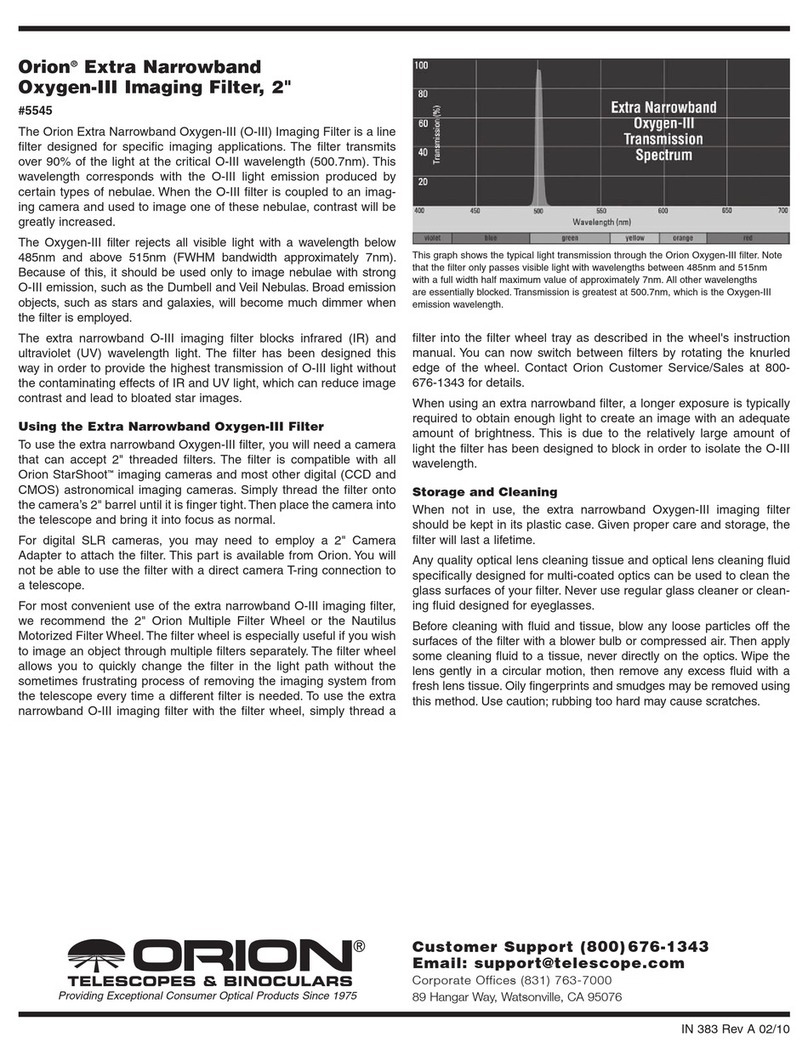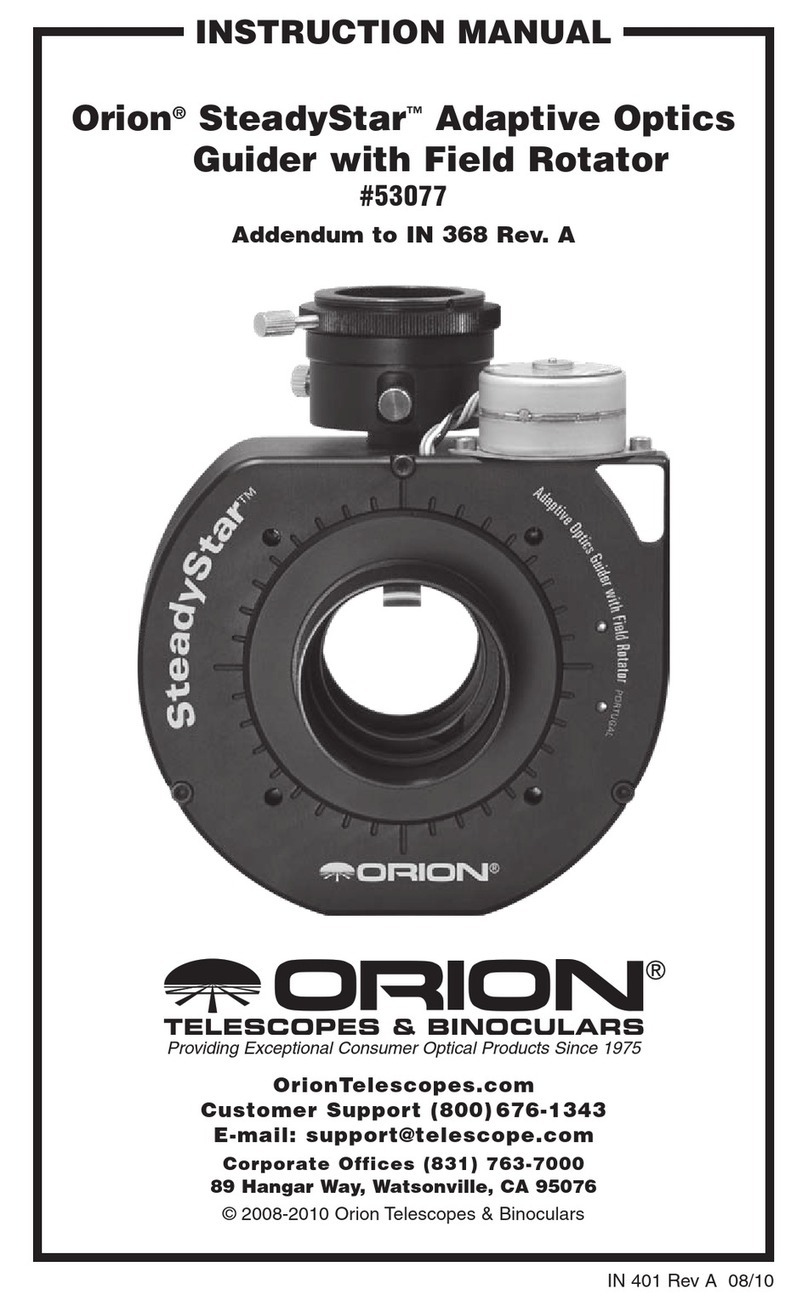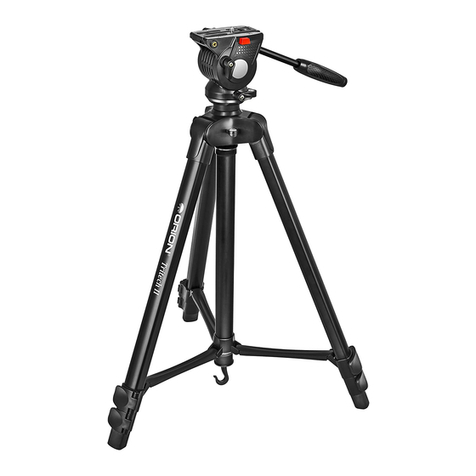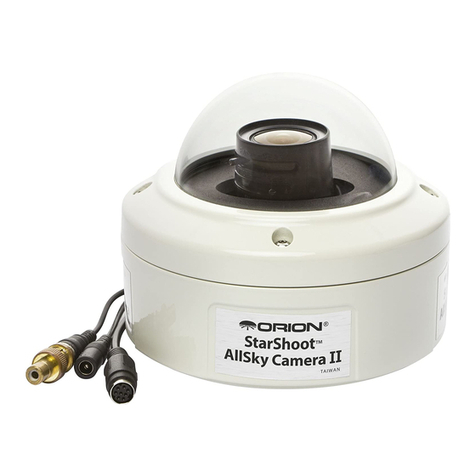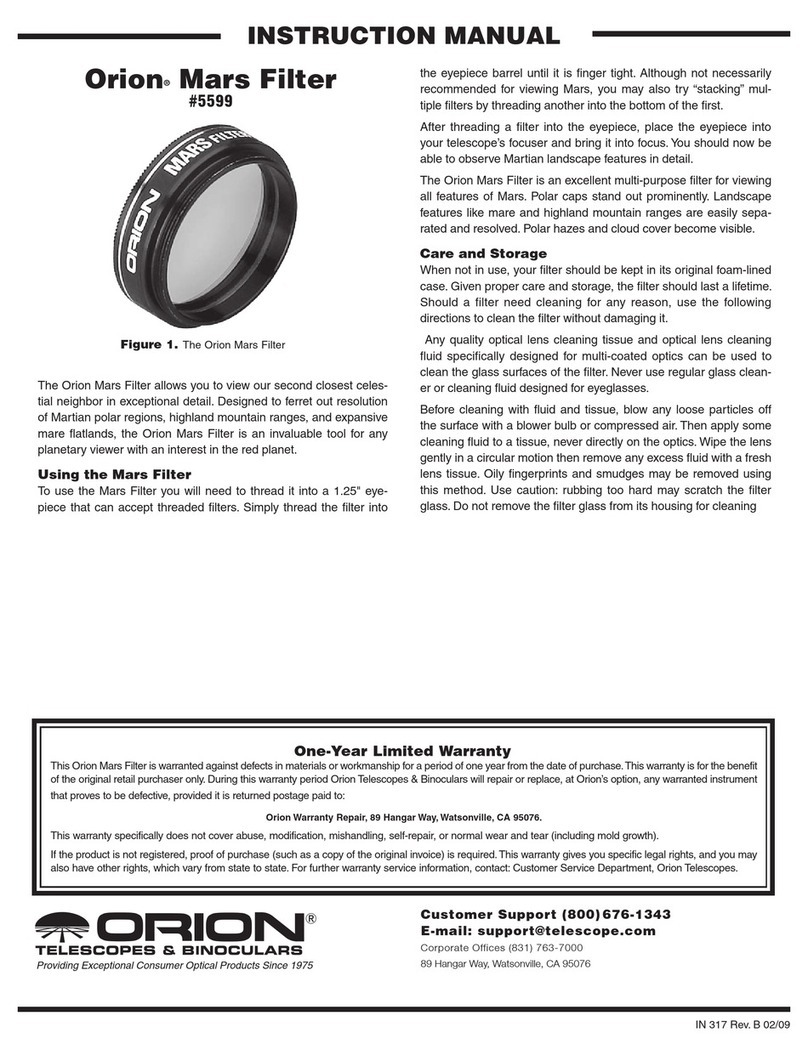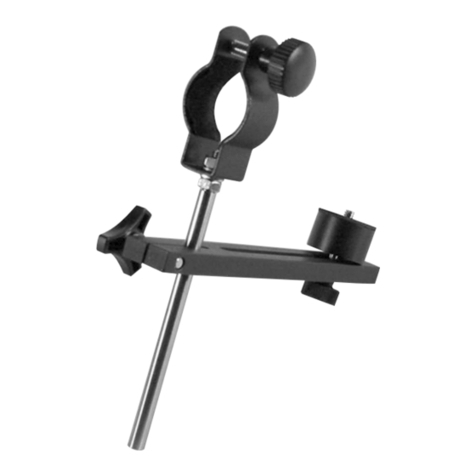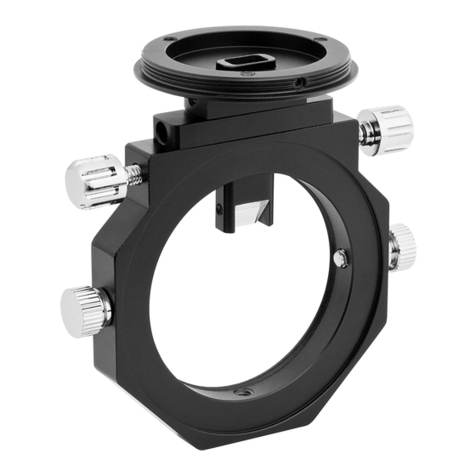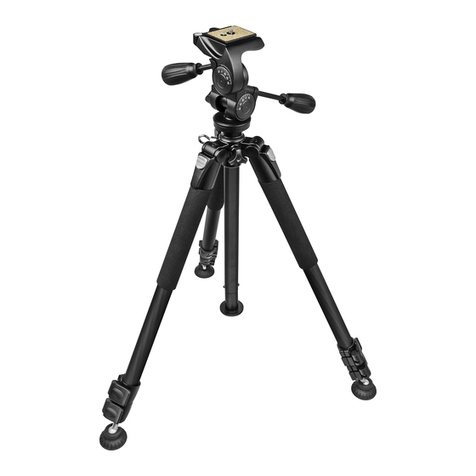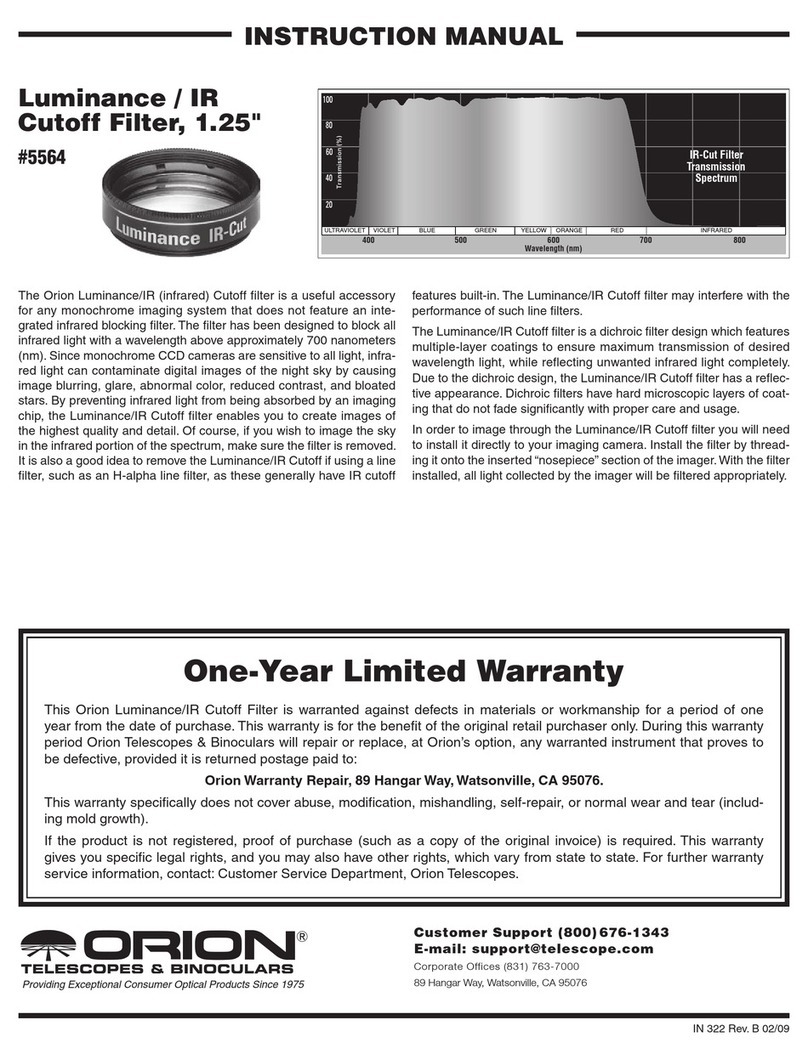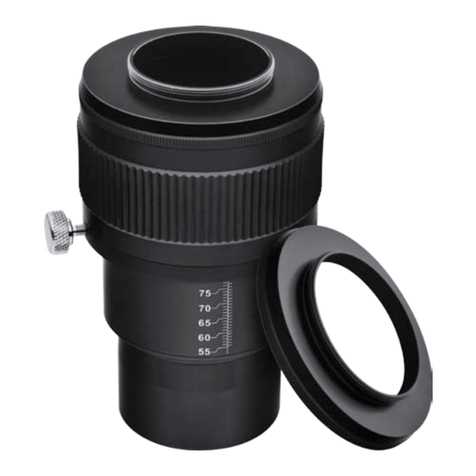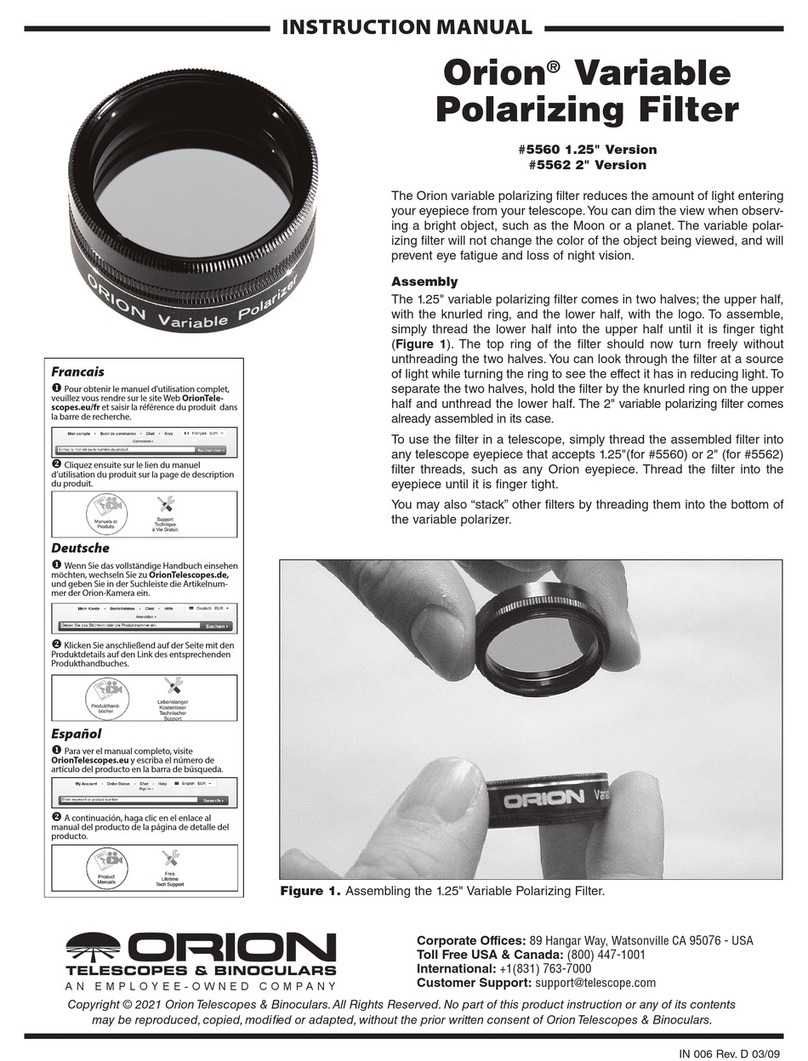
4
installed upside down. Remember that the wires on the ends
of the leads should extend away from the encoder shaft.
To check the RA axis, again point the telescope up and slightly
toward the South so the Dec. is at 0° on the original (mechani-
cal) setting circles. Rotate the original RA (mechanical) setting
circles so RA = 00. Move the telescope toward the Western
Horizon so RA = 18 hrs. and it should read 090+000. If it reads
270+000, then go back to the INSTALL mode and change the
+/- sign for the “R” encoder ratio and repeat the test. If you get
any other values, check the encoder ratios in INSTALL mode.
Also make sure the encoders and hardware are properly
installed; make sure all setscrews are tight.
Altazimuth Telescopes: Turn on Sky Wizard and position the
telescope vertically if scope type AV was selected in the
INSTALL mode or horizontally if AZ was selected for scope
type, as requested by the instrument. Press ENTER and then
the Mode button. Scroll to the ENC TEST mode to display
encoder angle. In AV mode, move the altitude axis down
approximately 45° from vertical. Move it up 45° in AZ mode.
Check that the display shows 000+045. If the display is in
agreement with the telescope position, then the altitude
encoder polarity is correct and no change to the encoder ratio
is required. If the display reads 000-045, then the polarity of
the “D” encoder ratio in the INSTALL mode must be changed.
If the second numerical value is not 045, then either the
encoder ratio is incorrect, or the encoder is not properly cou-
pled to the altitude axis of the telescope mount. Check to see
if you have entered the correct encoder ratios in the INSTALL
mode. Also check to make sure the connection of the encoder
to the altitude axis of the mount is proper and secure. If the
display reads 090+000 (change in first numerical value, no
change in second numerical value), then the leads from the
Sky Wizard cable are reversed; swap the leads by first discon-
necting them from the encoders and then re-attaching them to
the opposite encoder. If the display reads 000+000, then the
encoder is not properly “speaking” to the Sky Wizard; usually
this is due to the fact that the cable lead attached to the encod-
er is installed upside down. Remember that the wires on the
ends of the leads should extend away from the encoder shaft.
Press the MODE button and scroll to ENC TEST and press
ENTER. Move the telescope about the azimuth bearing clock-
wise 1/4 of a circle turn. The azimuth should increase from 0°
to 90° (first numbers) if you rotate the telescope 90° clock-
wise. The display should now read 090+045, where the +045
is from the test of the altitude axis. If the values are off, check
the encoder ratios in the INSTALL mode. Make sure the
encoders and hardware are installed correctly. If the display is
in agreement with the telescope position, then the altitude
encoder polarity is correct and no change to the gear ratio is
required. If the display reads 270+045, then go back to the
INSTALL mode and change the +/- sign for the “R” encoder
ratio. Remember to go all the way through the install mode
until the word INSTALL reappears to update the change.
Startup Index Mark
Once you have finished running INSTALL to tell Sky Wizard
about your telescope, there is one final step which need only
be done one time. In the SETUP command, you will see that
your telescope mount needs to be aimed to a particular posi-
tion once each time you set up to observe. The accuracy of
Sky Wizard is dependent upon you accurately setting the ini-
tial index mark for this position, so take your time.
Equatorial Mounts: If your telescope has an equatorial
mount with mechanical setting circles, then the declination
setting circle will serve nicely for the DEC=0 initial position
reference mark.
First, verify that the Dec. setting circle is accurately set by
aiming your telescope to 90° declination (telescope aimed up
the polar axis). Rotate the telescope in R.A. and look for any
tube “wobble.” You can verify this by looking through an
aligned finder to see that stars rotate around the middle of the
field of view. If necessary, adjust the tube in declination so
there is no wobble and reset the Dec. setting circle to 90°.
Another method for checking the Dec. setting circle on Fork
Mounted Equatorial telescopes is to use a bubble level. This
should be done using a carpenter’s level, before going out
into the field. Take the telescope off the wedge and put it on a
level surface. Make sure the drive base is level and the tele-
scope is pointed straight up with the corrector end away from
the drive base and the Dec. = 90. Place the level across the
front of the corrector cell, perpendicular to the fork arms.
Adjust the Dec. slow motion until it is level. Adjust the Dec.
setting circle to read exactly 90°.
Now, when the STARTUP mode initially prompts you to set the
telescope to DEC=0, you can be assured that the Dec. setting
circle will accurately indicate the 0° declination position.
German-type Equatorial Mounts: These mounts have two
possible positions for the 0° declination setting required dur-
ing initialization. It is important to use the correct one, or the
encoder sensing will be backwards. The telescope should be
aimed generally eastward when the declination is set to 0°.
Determine which of the two zero degree settings marks cor-
responds to this direction, and place an indicating mark there
for future use.
For Altazimuth or Dobsonian: Put a simple index alignment
mark on your scope to save time in the future.You can choose
to make the index mark with the telescope aiming either verti-
cally or horizontally, depending on your choice of mount type
in the INSTALL program (AV or AZ).
A precisely vertical orientation of the telescope tube can be
determined by positioning the telescope roughly vertical and
rotating the telescope around the azimuth axis. If the tube
appears to wobble as you rotate it, readjust the vertical posi-
tioning until the apparent wobbling goes away. Better yet, use
a carpenter’s level across the top of the tube; when the top of
the tube is level, the telescope is precisely vertical. Mark a
line on the telescope bearing and on the base to use for an
index mark. If using a Dobsonian, you can alternatively install
a “stop” in the base so the telescope stops at exactly the verti-
cal position.
A horizontal reference mark can be made by placing the tele-
scope base on a very level surface, and then leveling along
the telescope tube with a carpenter’s level. Mark a line on the
telescope bearing and on the base to use for an index mark.
